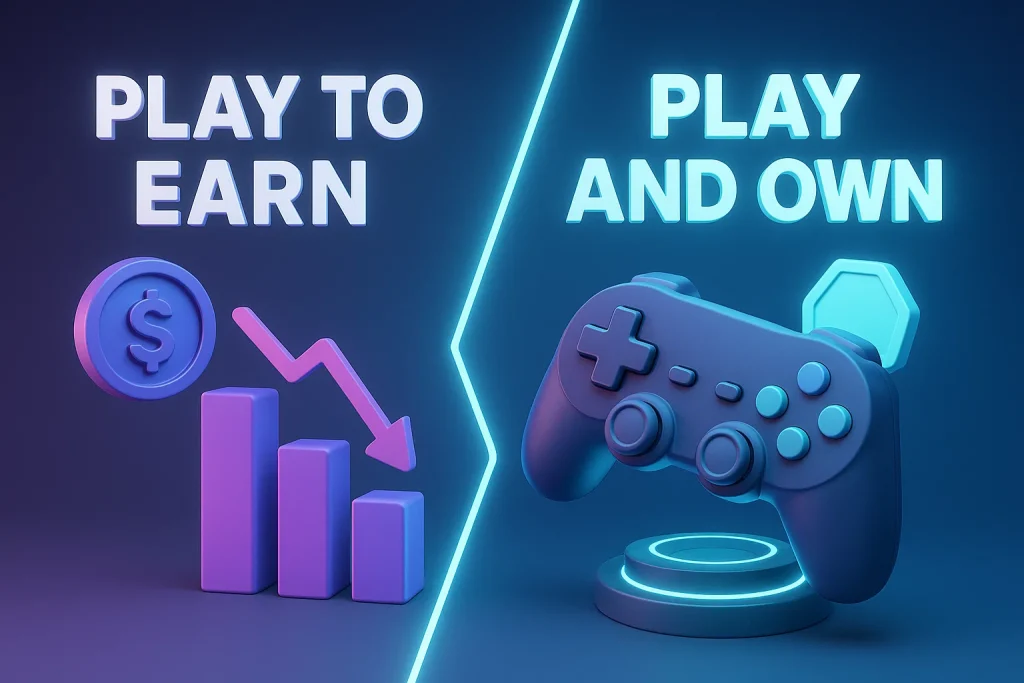The Rise and Fall of Play-to-Earn
When blockchain gaming first gained mainstream attention, the Play-to-Earn (P2E) model emerged as a revolutionary concept. It promised players the ability to earn cryptocurrency simply by playing, disrupting the traditional notion that only game developers and publishers could profit from digital worlds. In its early days, P2E created real economic opportunities, especially in developing regions where people could earn more from games than from conventional employment.
However, as user adoption grew, the flaws in the P2E model began to surface. Most of these games relied heavily on continuous user growth to sustain their token economies. The value of in-game rewards diminished as token inflation increased, and the ecosystems proved to be unsustainable. Once the flow of new players slowed, economic collapse followed. Many players were left with devalued assets and little incentive to continue engaging, exposing the short-term nature of the P2E design.
The Shift Toward Play-and-Own
In response to the limitations of Play-to-Earn, a new model emerged—Play-and-Own. This approach redefines the relationship between players and games by emphasizing long-term ownership rather than short-term earnings. Instead of earning tokens that lose value over time, players acquire unique digital assets such as NFTs that represent real ownership of in-game items, characters, or land.
Play-and-Own empowers players to take control of their assets and builds a more emotionally engaging experience. When players invest time to develop their characters, acquire rare items, or build in-game properties, their efforts result in assets that have actual value and utility—assets they can keep, sell, trade, or use across other platforms. This changes the player’s role from consumer to stakeholder, fostering deeper commitment and long-term community building.
GameFi’s Maturation Through Ownership
Play-and-Own represents a natural evolution of the GameFi sector, aligning with broader Web3 values such as decentralization, transparency, and user empowerment. By granting true ownership, games become more than platforms for entertainment—they become ecosystems where players can shape the narrative, economy, and future of the virtual worlds they engage with.
Unlike P2E, which was driven largely by speculation, Play-and-Own encourages sustainable design. Value is created through skill, creativity, and time—not just capital. While challenges remain, such as asset distribution fairness and market volatility, the foundation of Play-and-Own is more stable and inclusive.
As GameFi continues to evolve, its success will be defined not by how much players can extract, but by how much they can truly build, own, and believe in. The future of gaming lies in meaningful digital ownership, not fleeting financial rewards.
Contact Golden Sea Studios:
- Website: goldenseastudios.com
- Email: info@goldenseastudios.com
- Social Media: @goldenseastudios (Twitter, Instagram, Facebook)
- Telegram: @goldenseastudio
We are available online to assist you with any inquiries or collaborations. Reach out to us through these channels and let’s connect!


Recent posts
We’ve got a lot of awards for our products and services that became popular in the world.
Blog
Intergalactic: The Heretic Prophet – A Sci‑Fi Bounty Hunter Saga in the Making
Blog
Neverness to Everness – A Multiverse Action RPG Teasing “Mind‑Shift” Mechanics
Intergalactic: The Heretic Prophet – A Sci‑Fi Bounty Hunter Saga in the Making
Neverness to Everness – A Multiverse Action RPG Teasing “Mind‑Shift” Mechanics
Blood Message – NetEase & 24 Entertainment’s First AAA Solo Epic
League of Masters: Auto Chess – A Fresh Spin on Strategic Auto-Battling
Solo Leveling: ARISE – Step Into the Shadow Monarch’s World
Wuthering Waves 2.5 “Unfading Melody of Life” Launches July 24
Zenless Zone Zero – miHoYo’s Anime-Style Action RPG That’s Taking Fans by Storm
Dune: Awakening – A Next Gen Survival MMO Set to Shake the Sands